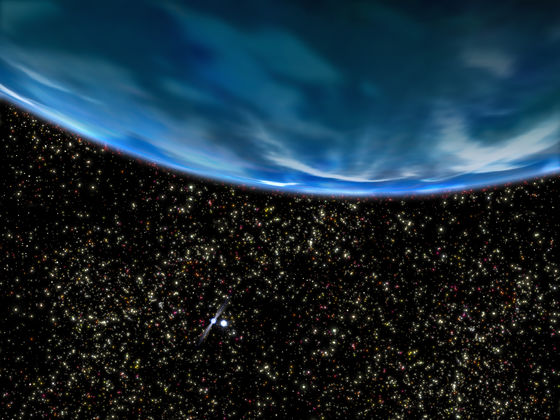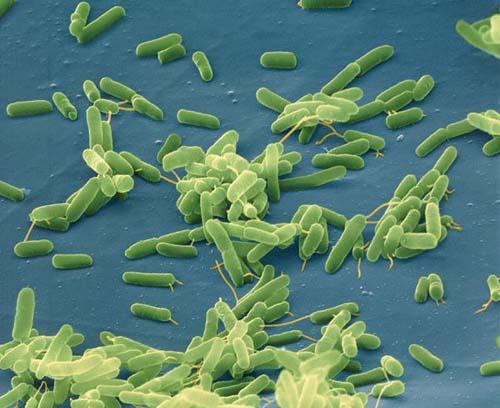Where are the animals coming from?

Creatures can roughly be classified into three categories, bacteria, plants and animals. Even for animals alone1 million typesIf there are plants and bacteria included, there are more than 5 million types of organisms on Earth, but "Where are the animals coming from?Everyone said that once in a magnificent theme that there seems to have been thought of,Quanta MagazineIt is unraveling.
Did Bacteria Drive the Origins of Animals? | Simons Foundation
http://www.simonsfoundation.org/quanta/20140729-where-animals-come-from/
The earth was born about 4.55 billion years agoIt seems that primitive life was born on the earth after about 550 million years since then. For billions of years since the birth of primitive life, only single-celled organisms existed on the earth.
After billions of years have passed since the birth, organisms will become more complex. Cells organize a new three-dimensional structure and become separated by each role such as "movement" "diet" "digestion", etc. Creatures with complicated multicellular organisms, "animals" are born. This is about 540 million years ago, during this period "Cambrian explosionIt is also a time when a mysterious phenomenon in which organisms called creatures called at once diversified occurred. At this time, organisms that become prototypes of all animals appearing at once in a shellfish, starfish, insects and crustaceans, but the mystery of how "how life has evolved from single cells to multicellular complex organisms?" It is deepening.

ByNASA Goddard Space Flight Center
Although there is a tendency to think that the birth or increase of animals is a matter of course, I am concerned about the process that unicellular organisms monopolizing the earth for billions of years suddenly became multicellular organisms and evolved into animals Place Multicellular organisms need to hold cells together for multiple cells to live together, there is a need to communicate between cells, and it is necessary to exchange oxygen and energy with each other.
It was the one that had a strong interest in such 'animal origin'Nicole KingMr. She is an evolutionary biologist at California Berkeley and a researcher at Howard Hughes Medical Research Institute. When asked to investigate ancient creatures, I am also afraid to "look for fossil or something?", But fossils do not teach clear answers.
Evolutionary biologist Nicole King.

Therefore, King's eyes turned on is a small aquatic life that can not be seen without using a microscopeCaterpillar caterpillar. This is an organism that is said to be "closest to animals among unicellular organisms", King says "If I want to know the origin of animals, I assert that I should see a collaglocilli" say.
Caterpillar caterpillar is an organism with elliptical flagella like a single tail, swimming underwater or eating with this flagellum. By shaking the flagella around, we are going to involve bacteria in the flow of water and dine it on the collar.

ByRichardgriscom
King seems to have a strong interest in the inflexible lifestyle of the Caterpillar caterpillar. Salpingoeca rosetta (S. rosetta) species which is a type of collaggic caterpillar is an organism living in a cove along the coast, and these can also be operated as a single body, but multiple individuals are connected by thin fibrous objects and multicellular It is possible to become like a living thing, and when there are many, more than 50 individuals may be connected.
At the beginning, it seems that why S. rosetta gathers together, but in 2006 the mistakes of students triggered the gathering mechanism as a trigger. S. rosetta gathers in a brief way when a kind of bacteria that you do not know before (S. rosetta can predict) appears, King says that S. rosetta gathered and become multicellular organisms It seems to be because people who connect more than one unicellular organism are suitable for survival. In addition, King says that it seems that "common ancestors of all living creatures have similarly fated encounters 600 million years ago like S. rosetta, and have become multicellular" .

King's research lighted something that is ignored by contemporary biologists, and this has been praised by many scientists for opening new observations. "She chose organisms to strategically study in order to gain insight into early animal evolution and systematically studied it," Dianne Newman, a biologist at the California Institute of Technology, evaluated King Mr. King. Furthermore, "King's study reminds us that even in the bacterial world it can be an important key to guess the evolution of animals."
The phenomenon that S. rosetta reacts with bacteria and becomes grouped has attracted attention, for example, in studies for unraveling "benefits gained by multicellularization", and King and her research team also covered this subject I am studying. However, even though bacteria grouped contemporary Caterpillar caterpillars, it can not be said that the ancient creatures were so, and the mechanism by which collaglotic caterpillars gathered was not from ancient times, There are biologists thinking that it was obtained in the process of long evolution until the present age.
King says, "I am getting too much fact to assume that bacteria will have some serious influence on the animal's origins.Although there are many bacteria on the earth before the birth of animals, There will be great impact on animals and creatures that are the ancestors of modern animals. " It is easy to imagine that the bacteria that existed in large quantities in the ancient times would have ingested this and their ancestors would have acquired energy. King says that animals would have evolved a diverse evolution to predict this bacterium more efficiently, and King estimates that "bacteria existed at the center of the evolution of animals".

ByCesar harada
Particularly noteworthy in relation to the evolution of animals and bacteria is that "bacteria may have induced multicellularization of ancient unicellular organisms". Coral and squirrels, sponge caterpillars and sponge coconuts float in water at the stage just born, but according to a study these are stuck to rocks and the like using the compounds produced by bacteria and change their lives That's right. This is thought to be a remnant of the evolution from the Caterpillar caterpillar, and if the response to the bacterial mixture is common among animals that exist from the most ancient, this is the earliest animal King says it will be a reasonable basis to think that "they evolved to adapt to the abundant environment of bacteria".
Also, the relationship between animals and bacteria is not only between the first animals. For example, bacteria are found by studies that are necessary for the growth of the organ of Jarika, and other substances necessary for the maturation of the animal immune system, the internal organs of zebrafish and murine, It is also known to be essential for forming mammalian brain and so on. In addition, bacteria are essential for the digestive system of various creatures, from termites to humans.
Whether the relationship between animal's evolution and bacteria is what it is or whether it is totally unrelated is still not clear yet, as King's research suggests, "From the grouping of collaglotic ciliates to multicellular If an organism was born ", will it be that the distant ancestors of human beings were shaped like sperm?

Related Posts:







